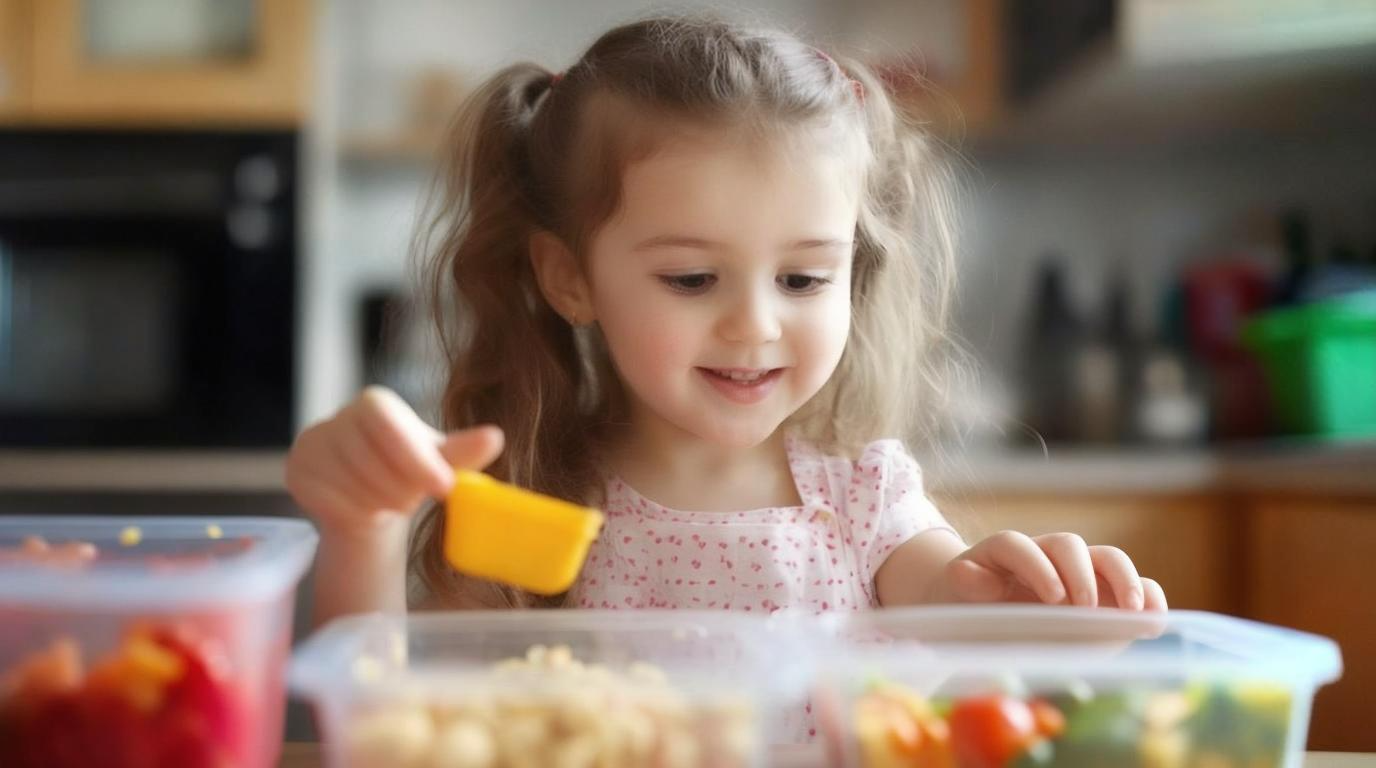Healthy Snacks: Practical Items for Storing and Transporting Food in a Child's Routine
Managing healthy snacks for children can feel like a daily puzzle, especially for busy parents juggling multiple responsibilities. With childhood nutrition playing a crucial role in development and establishing lifelong eating habits, finding practical solutions for storing and transporting healthy snacks has become more important than ever. In this comprehensive guide, we'll explore effective strategies and tools to make healthy snacking both convenient and enjoyable for your children.
Creating a Structured Snack Schedule
Establishing a consistent snack routine is fundamental to promoting healthy eating habits in children. Research shows that children thrive on predictability, and this extends to their eating patterns. The recommended approach includes three main meals supplemented by two nutritious snacks throughout the day. This schedule helps regulate energy levels, supports cognitive function, and prevents the likelihood of unhealthy food choices driven by hunger.
- Morning snack: 2-3 hours after breakfast
- Afternoon snack: 2-3 hours after lunch
- Portion control through planned times
- Flexibility for active days or growth spurts
Smart Snack Selection Guidelines
The key to successful snack planning lies in selecting nutritious options that combine different food groups. A well-balanced snack should include at least two of the following: proteins, complex carbohydrates, healthy fats, and fruits or vegetables. Here are some winning combinations that children typically enjoy:
- Apple slices with almond butter
- Greek yogurt with berries and granola
- Whole grain crackers with cheese
- Carrot sticks with hummus
- Trail mix with dried fruit and nuts
Essential Storage Solutions and Equipment
Investing in the right storage equipment is crucial for maintaining food freshness and making healthy snacks accessible. Consider these essential items for your snack organization system:
- Divided bento-style containers
- Insulated food containers
- Reusable silicone bags
- Ice packs and thermal containers
- Small portion containers
Temperature Control and Food Safety
Maintaining proper temperature for perishable snacks is essential for food safety. Cold items should be kept at or below 40°F (4°C), while hot items should remain above 140°F (60°C). Using quality insulated containers and ice packs helps maintain safe temperatures during transport. Consider investing in containers with built-in cooling elements or separate compartments for temperature-sensitive items.
Strategic Planning for On-the-Go Snacking
Whether it's a short car ride or a full day of activities, having a strategy for mobile snacking is essential. Here's how to plan effectively:
[To be continued in Part 2...]Planning Ahead for Different Scenarios
For effective on-the-go snacking, consider these specific scenarios and solutions:
- School days: Pack snacks in easy-to-open containers
- Sports activities: Include hydrating snacks and electrolyte-rich options
- Long car rides: Choose mess-free, non-perishable items
- Playdates: Consider portion sizes for sharing and common allergies
Preparation and Organization Tips
Success in maintaining healthy snacking habits often comes down to preparation. Implement these organizational strategies:
- Designate a specific "snack zone" in your kitchen
- Pre-portion snacks at the beginning of the week
- Create grab-and-go stations in the refrigerator
- Label containers with contents and dates
- Rotate perishable items regularly
Involving Children in the Process
Engaging children in snack preparation and organization can increase their interest in healthy eating and teach valuable life skills. Consider these involvement strategies:
Age-Appropriate Tasks
- 3-5 years: Washing fruits, sorting items, simple assembly
- 6-8 years: Basic cutting with supervision, portioning, container packing
- 9+ years: Independent snack preparation, meal planning assistance
Educational Opportunities
Use snack preparation as a teaching moment to discuss:
- Basic nutrition concepts
- Food groups and their benefits
- Kitchen safety and hygiene
- Environmental responsibility through sustainable packaging
Sustainable Snacking Solutions
Incorporating environmentally conscious practices into your snack routine teaches children about sustainability while reducing waste. Consider these eco-friendly approaches:
Sustainable Packaging Options
- Reusable cloth snack bags
- Stainless steel containers
- Beeswax wraps
- Glass containers with silicone sleeves
- Bamboo utensils
Waste Reduction Strategies
Implement these practices to minimize environmental impact:
- Buy in bulk and portion into reusable containers
- Choose package-free produce when possible
- Compost appropriate food waste
- Use washable napkins instead of disposable ones
Managing Special Dietary Requirements
When dealing with food allergies, intolerances, or specific dietary needs, additional planning is essential. Consider these strategies:
Allergy-Friendly Solutions
- Clear labeling of allergen-free foods
- Separate storage areas for different dietary needs
- Alternative snack options for common allergens
- Communication with teachers and caregivers about restrictions
Seasonal Considerations
Adapting snack choices and storage solutions according to seasons helps maintain food quality and freshness:
Summer Snacking
- Frozen fruit options
- Additional ice packs for temperature control
- Hydrating snack choices
- Quick-spoiling food alternatives
Winter Solutions
- Thermos containers for warm options
- Heartier snack choices
- Indoor storage considerations
- Immune-boosting food selections
Troubleshooting Common Challenges
Address common snacking obstacles with these practical solutions:
Time Management
- Weekly meal prep sessions
- Evening preparation for next-day needs
- Simplified snack rotation system
- Emergency snack supplies
Picky Eaters
- Gradual introduction of new foods
- Creative presentation techniques
- Involvement in food choices
- Positive reinforcement strategies
Long-Term Success Strategies
Maintaining healthy snacking habits requires ongoing commitment and adaptation. Consider these long-term strategies:
Regular Assessment
- Monthly review of snack choices
- Equipment maintenance checks
- Storage system evaluation
- Child feedback incorporation
Continuous Education
Stay informed about:
- Latest nutrition guidelines
- New storage technologies
- Seasonal food options
- Food safety updates
Conclusion
Successfully managing healthy snacks for children requires a combination of proper planning, appropriate tools, and consistent implementation. By establishing organized systems, involving children in the process, and maintaining flexibility to address changing needs, parents can create sustainable snacking routines that support their children's health and development. Remember that small, consistent efforts in implementing these strategies can lead to significant long-term benefits in children's eating habits and overall well-being.
